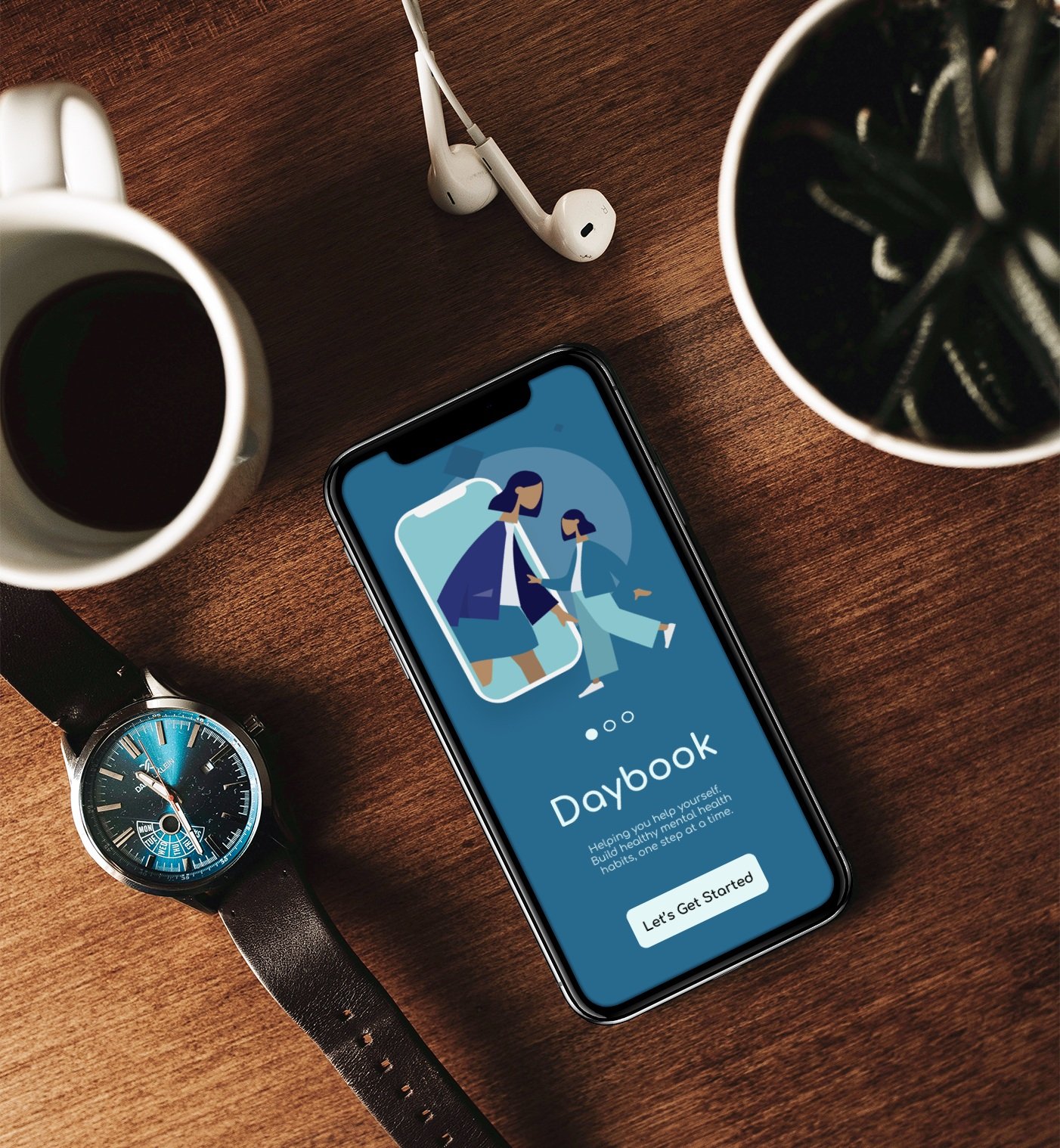
Daybook
An intelligent mobile journaling app that helps track and develop healthy mental health habits in a more personalized way, specifically designed for those quarantined during the COVID-19 pandemic.
Team:
Prerna Ravi (SWE), Ryan Fite (SWE), Pranav Upadhyayula, (PM)
Role:
Researcher, Designer, Front-end engineer
Date:
Microsoft Intern Hack for Social Good, June 2020 (view slide deck here)
C+T Fix, Hack, Learn Week, July 2020 (view slide deck here)
Advisors:
Chris Brown (Microsoft), Justine Du, (Microsoft)
Tools:
Figma, React Native, C#, Msft Cognitive Services
What’s the problem we’re trying to solve?With the COVID-19 situation continuing to be an omnipresent stressor in many of our lives, mental health has become an increasing concern among every age group. However:users are often unwilling or unable to put in the money, time, or effort required to seek professional help90% of mental health app users abandon use within 7 days due to a lack of personalization and effectiveness.
This challenge begs the question: How can we create an application that will help people self-manage their mental health in a cost-free, mindful, effective way that also feels personalized and promotes long-term well being?Process.
Research.
I conducted a multi-methodology research effort to better understand the frustrations people of various backgrounds were experiencing in terms of mental health as a result of COVID-19. I looked at scientific studies, online articles, and conducted numerous user interviews to see how people felt about their mental health and the resources available to help them manage it during this time, in terms of effectiveness, personalization, and cost. What do users like and dislike about existing mental health apps?
What defines a successful mental health app?
How have mental health needs changed as a result of COVID-19?
How do people currently practice self-care?
Literature Review & Competitive Analysis
Findings, based on various scientific studies and online articles + surveys
20% of teens experience depression before they reach adulthood
30% of teens experience some form of anxiety
Therapy sessions cost $150 on average, and that cost makes it inaccessible for most teens
Over 20% of teens have used mental health apps
90% of mental health app users abandon use within 7 days
Nearly 50% in the US reported that their mental health has been negatively impacted due to worry and stress over COVID-19.
How do you feel today?
What makes you feel better in general?
If you could do one thing to make you feel better today what would it be?
Do you feel like you have ever experienced any mental health struggles?
Have you ever used an app to improve your mental health? If so, which one(s)?
Do you still use these apps? Why or why not? What did you like/dislike about them?
Do you feel like you’ve had an increase in mental health struggles over the last couple of months due to the COVID-19 situation?
If you were to design an app that could best address/help you, what would that app do?
Do you journal? If so, why and how often?
How do you practice self-care?
User Research
Based on 15 twenty minute interviews conducted with friends, family, and coworkers over Microsoft Teams and Zoom.
“My mental health has become much worse because I’m not having as much human interaction so I’m internalizing a lot more instead of talking things out. Everything is very isolating, and I want to see a therapist because I’ve been feeling a depressed, but finding one and talking to a complete stranger feels outside of my comfort zone.” - User 3
Extract Insights.
Based on the research data, I analyzed and extracted recurring themes and patterns across each research activity into 5 insights.

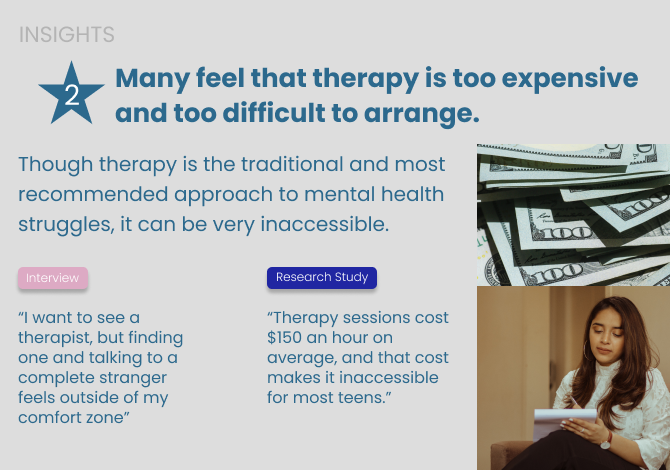
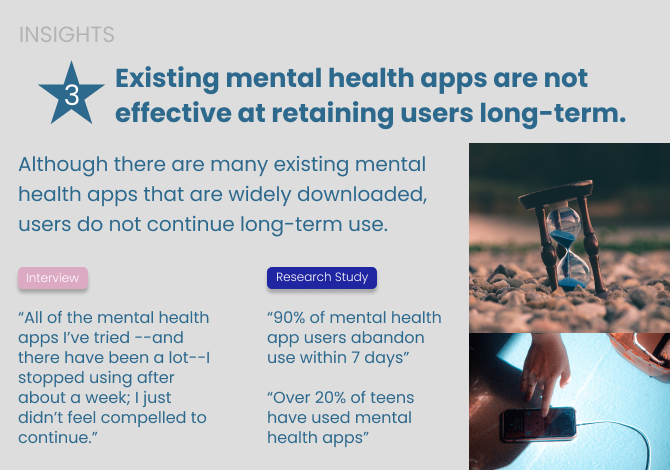
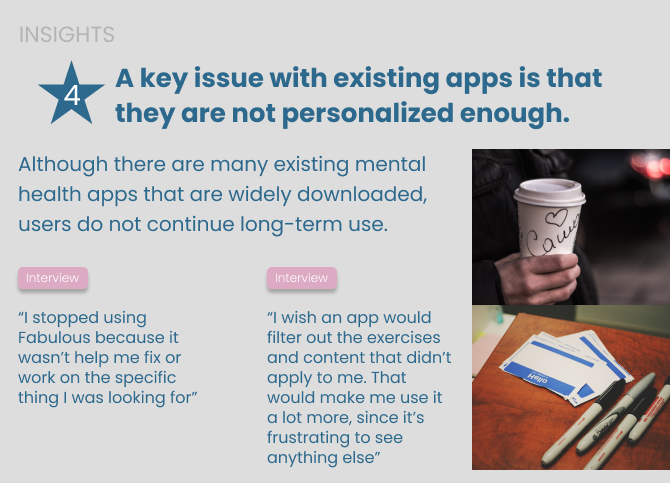

User Personas
After conducting user interviews, I was able to combine the concerns and feedback I had received to come up with personas to represent my target audience.
The overarching goal was to make the app useful for:
Anyone with smartphone access struggling with mental health issues, especially during the COVID-19 pandemic
And to:
Achieve the personalization of the user’s mental health experience without the lengthy and costly process of finding and paying for a therapist
Chris: The Isolated Student
Background: Chris is a 19 year old sophomore at Microsoft University studying Computer Science. He loves performing with the Azure Acapella group, hanging out with his friends, and winning hackathons.
Frustrations: Chris, like millions of other college students in America, has recently been suffering from anxiety because of the social isolation he’s been feeling due to the global pandemic. He has been struggling with anxiety and depression for some time, and the situation seems to be elevating both. He feels like he could benefit from some help, but finding a therapist seems so intimidating and he doesn’t feel connected to the mental health apps he uses.
Goals: Find a way to improve his mental health that feels more personalized to him but doesn’t involve a large time commitment and directly gets him help.
Anika: The Overwhelmed Parent
Background: Anika is a 45 year old mother of two. She is a history teacher at a local high school, and has two children, a ten year old and a four year old. She loves to read in her spare time, and spend time playing with her daughters when she comes home from work.
Frustrations: Being at home has been stressful because she has been taking care of two young children and teaching classes over zoom, and being anxious about whether and when she will be asked to teach in person. She feels like she never has time to herself to relax, and feels stressed all the time, which leads her to often feel angry, sad, and frustrated with her life.
Goals: Find a way to adjust to the new lifestyle she has in quarantine and also take care of herself in addition to the rest of her family, and find a way to accept the uncertainty of her professional life.
User Flow.
Design Process.




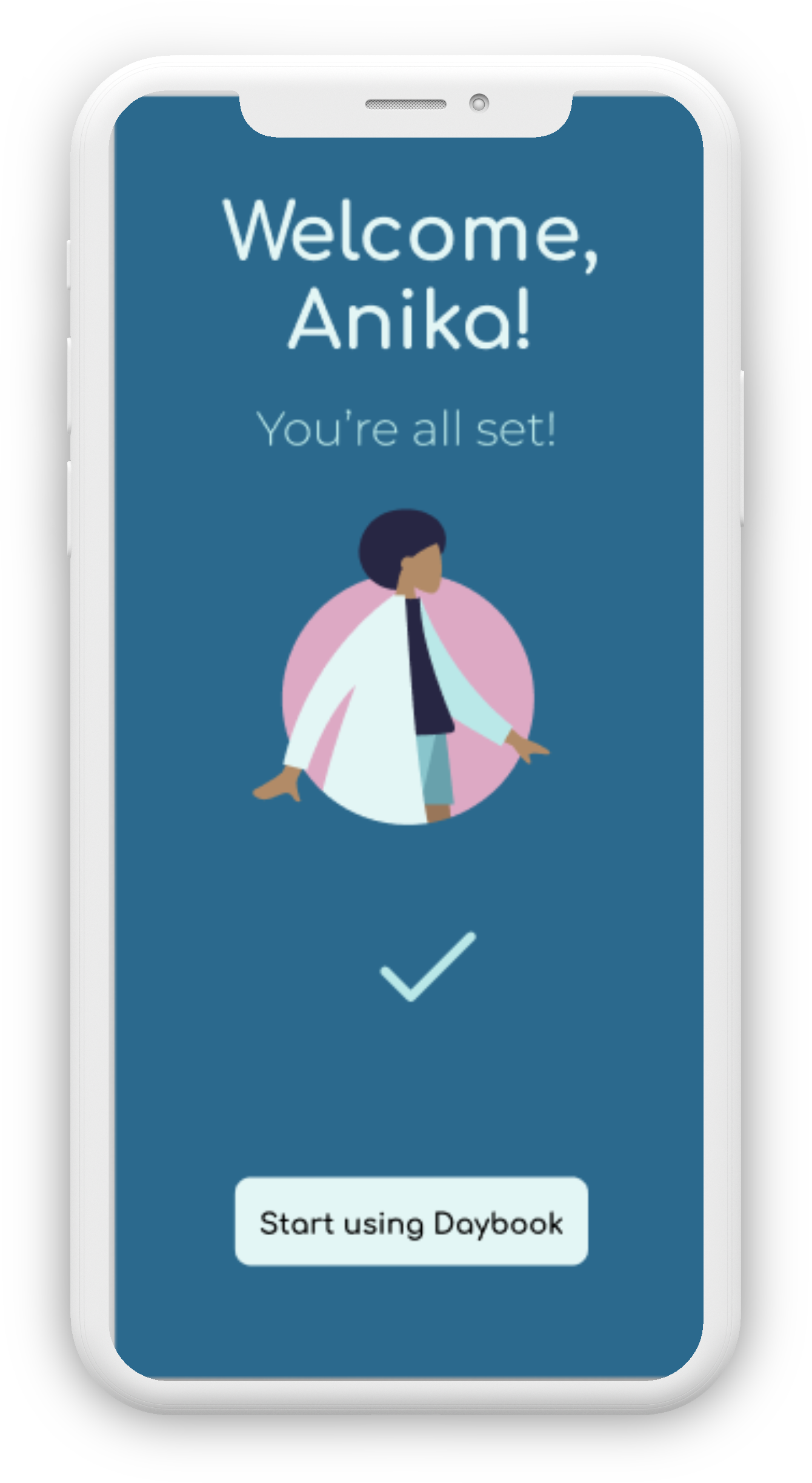
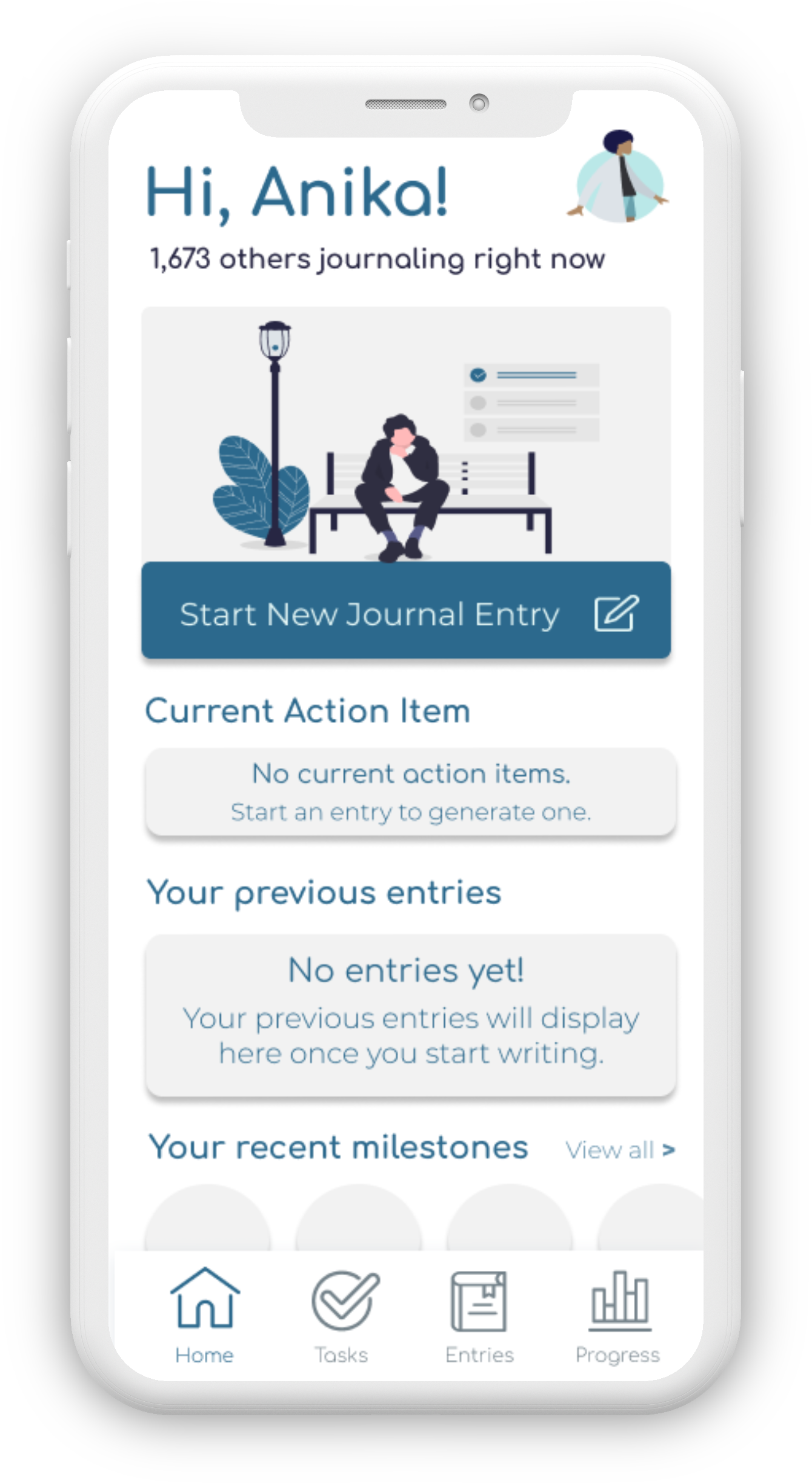
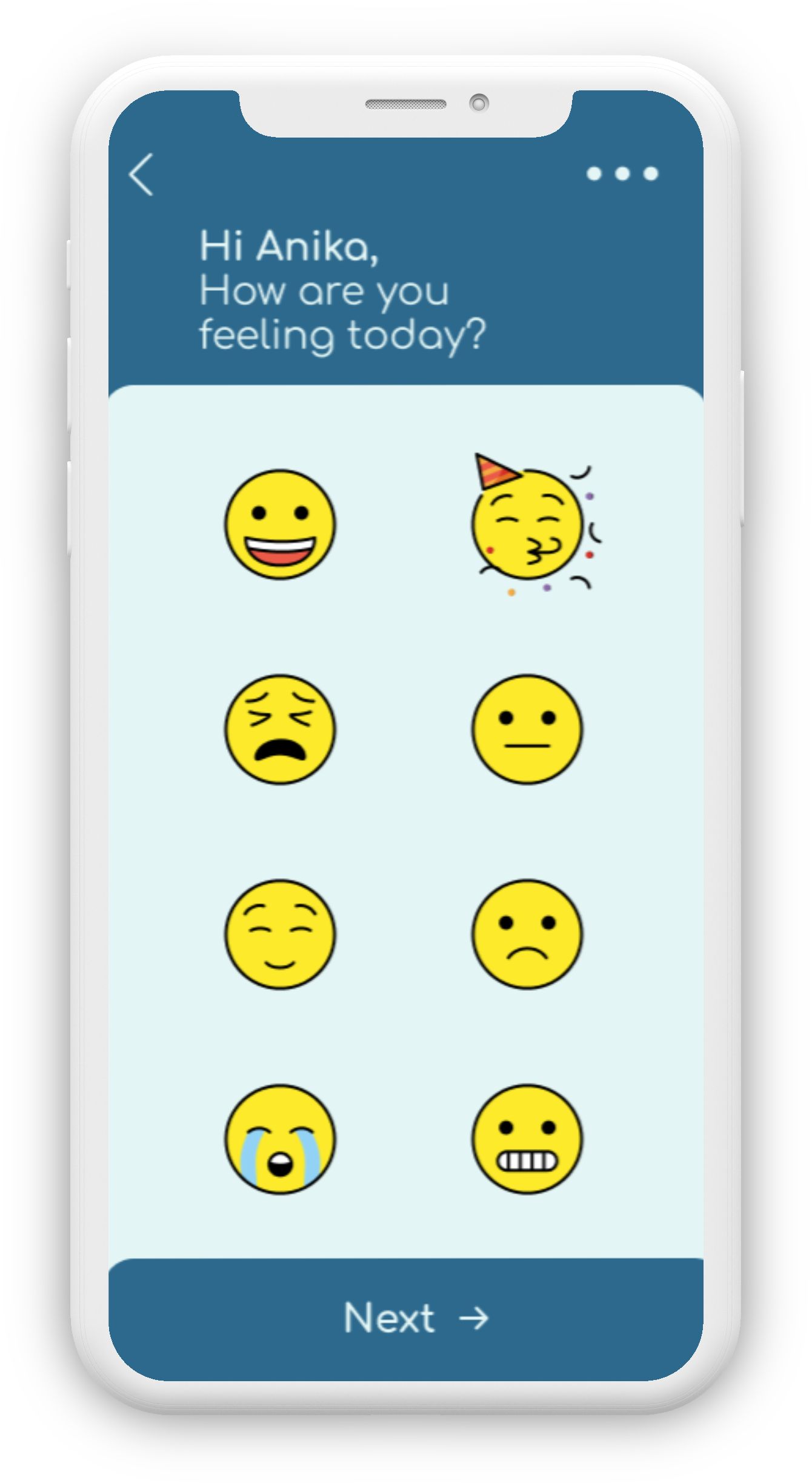
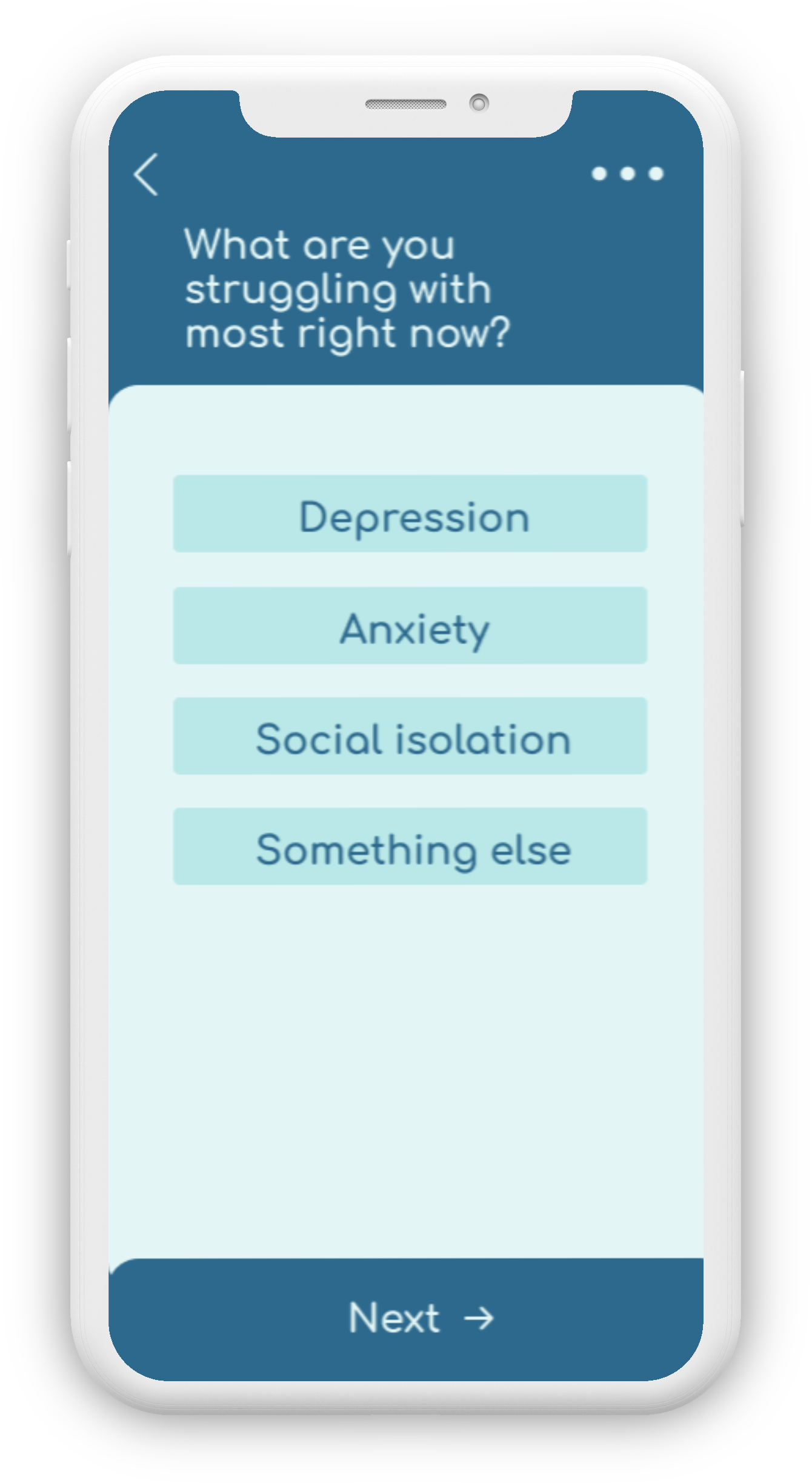


Onboarding Flow.
Functional goal: consider how each step of the onboarding process will serve the app’s main purpose: creating a more personalized experience.
Insights from other mental health apps’ onboarding experiences (Headspace, Fabulous):
1. Direct and detailed questions
2. Simplicity in both text and design (minimalistic, but soothing colors)
Clean and minimalistic with soothing color theme: soft, calming shades of blue and light pink
Insights from User Interviews:
1. Users want to customize and select what they individually want from mental health apps
2. Users want the app to adapt in small ways to adapt to their specific needs
Ask users what they are struggling with, to help with future prompt suggestions and activity ideas
Ask users what they are looking for from the app
Overarching Design Decisions.
The simplicity primarily came in through the UI design elements.
Color theme with primarily soft, calming colors, including shades of blue and light pink, to convey the central message of the app as de-stressing.
Put together the illustrations for each page using elements from the Humaans Illustration Library: simplistic, with just the right amount of detail to reflect a diverse user base and be aesthetically appealing.
Daybook Type Ramp
Daybook Color Palette






Journaling.
Daybook is an intelligent journaling app that uses information about the user’s mood and recent history to:
Generate prompts for the user to journal to. This is to make the app more personalized and best suited for the individual’s current mental health concerns.
Recommend options for small goals and action items for the next day. This is to help the user self-manage and improve their own mental well-being in a way that does not feel stressful.
Based on the user research and personal experience, mental health is very dynamic, especially when living during a pandemic. Because it changes all the time, so should an app designed to respond to someone’s mental health needs. The intelligent aspect of the journal is significant because it allows the app to respond specifically to the user’s changing mental wellbeing, as well as to the issues the user has been struggling with.




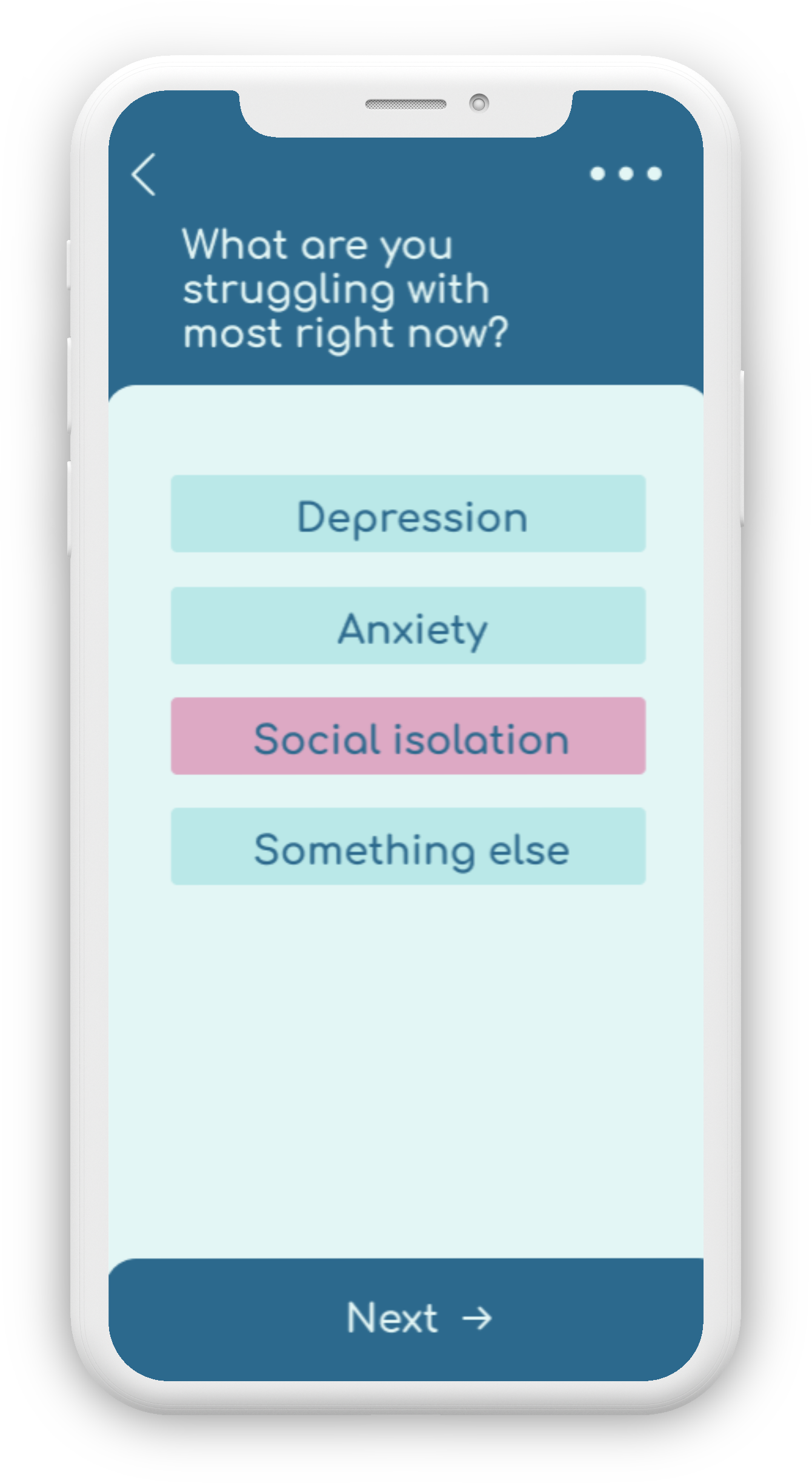
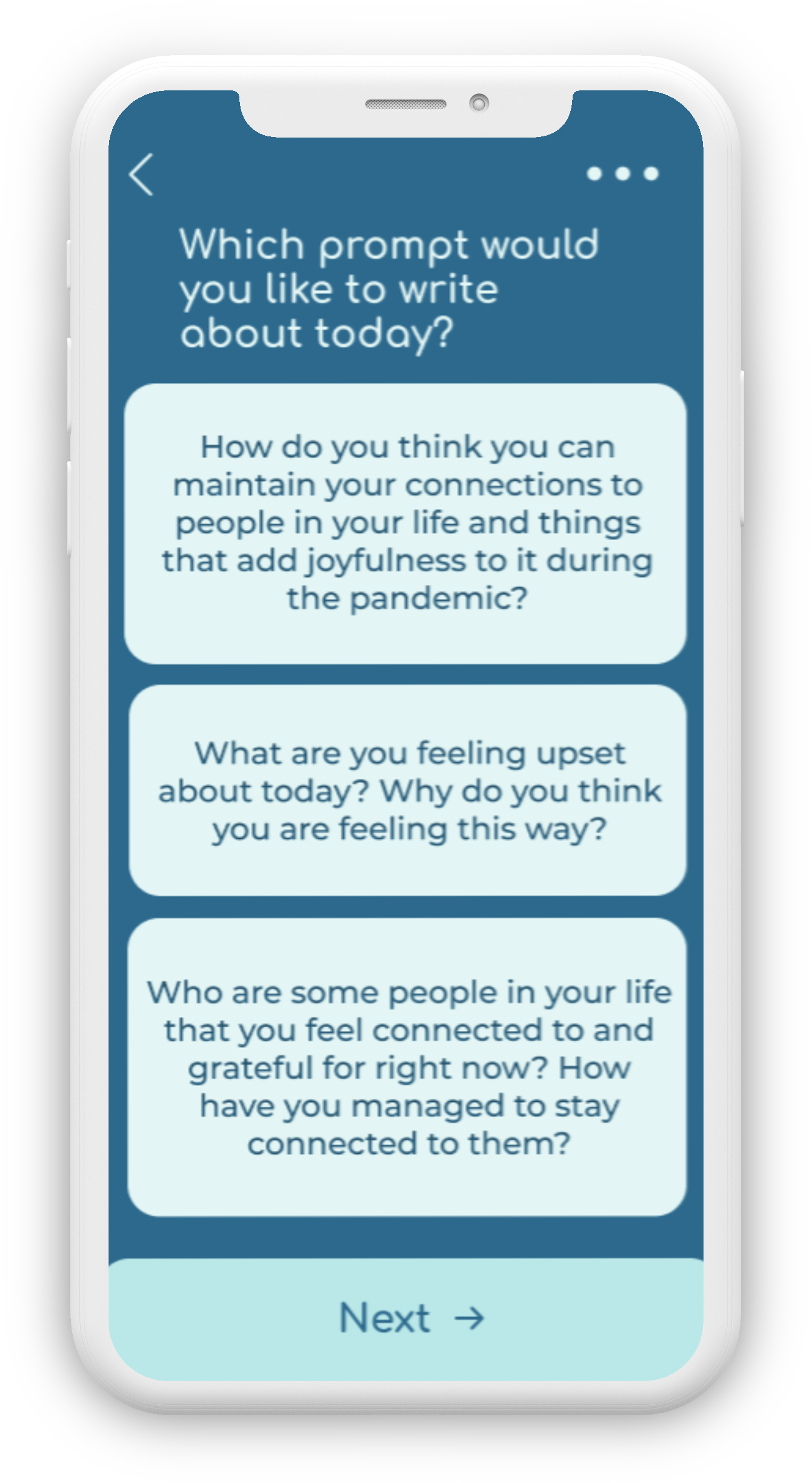


Discussion
Some further considerations to improve & implement this project:
Implement the milestone reward system.
Connect the app with social media so users can share their health-points and recent self-care activities to raise awareness and increase incentives.
Design the view for users to view their previous entries in an effective manner. Implement a feature so that the app will compile weekly self-care reports to update users on their progress.
Update the code to reflect the UX/UI changes.









